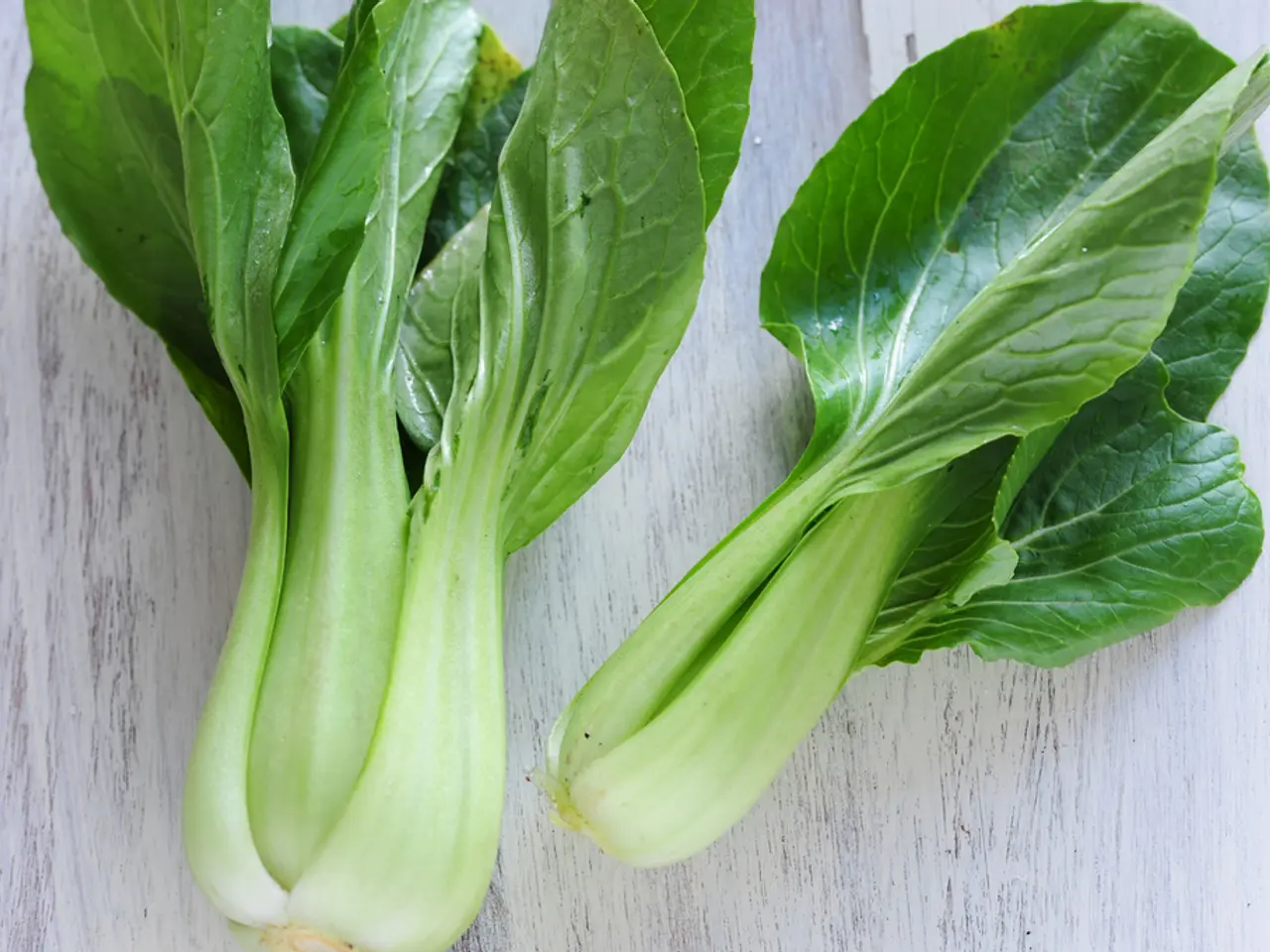Celeriac: Advantages, Preparation Ideas, and Nutritional Overview
Celeriac, also known as celery root, is an unusual and nutritious vegetable that offers a wealth of health benefits. Known for its use in a French dish called celeri remoulade, this root vegetable can be enjoyed mashed, chopped in soups, or used as a low-carb alternative to potatoes in various recipes.
This versatile root vegetable is particularly beneficial for bone health, heart health, and diabetes risk management.
### Bone Health
Celeriac is an excellent source of vitamin K, providing about 80% of the daily value in one cup. Vitamin K plays a crucial role in blood clotting and building strong bones, as it helps with calcium binding in the bone matrix, thus supporting bone density and strength. Additionally, celeriac contains calcium, another vital mineral for maintaining bone health.
### Heart Health
Rich in potassium, celeriac helps regulate blood pressure by balancing sodium levels in the body. Proper potassium intake is associated with a reduced risk of hypertension and heart disease. Moreover, celery family vegetables, including celeriac, have anti-inflammatory and antioxidant properties that protect blood vessels from damage and may help lower cholesterol levels.
### Diabetes Risk
Celeriac is a low-carb root vegetable with only about 11.6 grams of net carbohydrates per cup and a low glycemic index of 35. This makes it an ideal substitute for higher-starch root vegetables, such as potatoes, for people managing blood sugar levels or diabetes. Its fiber content, particularly insoluble fiber, can help regulate digestion and improve blood sugar control.
In summary, celeriac supports bone health through high vitamin K and calcium content, promotes heart health by providing potassium and antioxidants, and may help reduce diabetes risk due to its low glycemic index and carbohydrate content.
Celeriac provides 65.5 calories per cup and can be a significant contribution toward people's recommended daily intake of vitamins C and K. However, more research is necessary to confirm celeriac's potential to prevent type 2 diabetes.
Grown for its roots, not its edible leaves and stalks like celery, celeriac has green leaves and stalks that grow above ground, and roots with a rough, brown skin that grow underground. The edible part of celeriac is its root, which is pale and resembles a potato or turnip.
Celeriac's flavor is similar to celery and parsley, making it a versatile ingredient in the kitchen. It can be eaten raw or cooked, baked, boiled, fried, or steamed, and used in soups, mashes, side dishes, and salads. It can also be used as a substitute for celery, parsley root, parsnips, or potatoes in recipes.
A study found that people who ate the most root vegetables had a 13% lower risk of developing type 2 diabetes, suggesting that celeriac, with its rich nutritional profile, could potentially boost bone and heart health, and help reduce the risk of diabetes.
Sources: [1] Harvard T.H. Chan School of Public Health. (n.d.). Potassium. Retrieved from https://www.hsph.harvard.edu/nutritionsource/potassium/ [2] National Institutes of Health. (2019). Vitamin K. Retrieved from https://ods.od.nih.gov/factsheets/VitaminK-HealthProfessional/ [3] United States Department of Agriculture. (2019). Celeriac, raw. Retrieved from https://fdc.nal.usda.gov/fdc-app.html#/food-details/171881/nutrients [4] University of California, San Francisco. (n.d.). Vitamin K. Retrieved from https://www.ucsfhealth.org/education/vitamin-k/ [5] World's Healthiest Foods. (n.d.). Celeriac. Retrieved from https://www.whfoods.com/foodstoc.php?foodid=11677
- In addition to its French dish celeri remoulade, celeriac can be used in various other nutrition-rich recipes, contributing to overall health-and-wellness and global-cuisines.
- As a low-carb and low glycemic vegetable, celeriac could be a valuable ingredient for individuals with diabetes mellitus, as it may help regulate blood sugar levels.
- Mental-health benefits may potentially be gained through consuming celeriac, as its high potassium content has been linked to a reduced risk of hypertension and heart disease, which are known to impact cognitive function.
- In the realm of fitness-and-exercise, incorporating healthy-cooking practices such as using celeriac as a substitute for potatoes can contribute to a balanced lifestyle, food-and-drink, and overall fitness-and-wellbeing.
- CBD, a non-psychoactive cannabinoid compound with potential health benefits, could potentially be combined with celeriac in various recipes for an enhanced overall nutritional profile, although this remains a topic for future scientific research.
- Furthermore, the anti-inflammatory and antioxidant properties of celeriac and the celery family vegetables could extend their potential health benefits to mental-health and overall wellness when incorporated into a well-rounded lifestyle.
- Nutritionists and health practitioners can recommend celeriac as a nutritious addition to people's diets, providing diverse health benefits ranging from bone health, heart health, diabetes risk management, and overall health-and-wellness.




